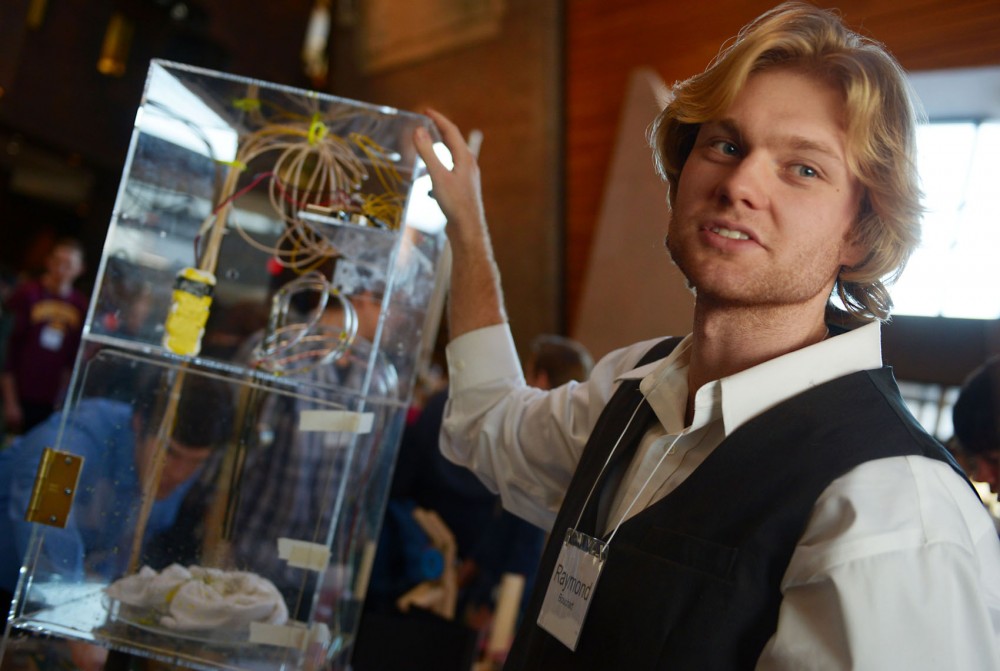Mechanical engineering sophomore Joseph Nasvik created a “dish roulette” robot to randomly assign dishwashing tasks to his roommates.
When turned on, the robot’s wheel spins and delegates the chore.
Nasvik was one of 240 University of Minnesota College of Science and Engineering students who displayed work from their Introduction to Engineering class Monday at the McNamara Alumni Center.
To receive a final grade, the students must participate in the Robot Show. Though it isn’t competitive, three panels of judges from the engineering field evaluate the students’ work.
“The goal is to help [the students] see what it’s like to be an engineer,” mechanical engineering assistant professor Timothy Kowalewski said.
In the professional field, he said, CEOs and supervisors evaluate created products. The robot show gives students an idea of what that experience is like.
Mechanical engineering sophomore Raymond Bouchart, who created a robot that automatically tie-dyes T-shirts, said he liked making his ideas a reality.
“It’s nice to get my hands wet in the field designing stuff,” he said. “The show gives me a good idea of what the engineering process is like.”
The introductory engineering class teaches students programming and some design techniques, Kowalewski said, but what they design is up to them.
The project’s main requirements are that materials cost less than $50 total and that the robot does something “useful and interesting,” he said.
Though it’s tough for students to make robots that haven’t been made before, Kowalewski said, they have new ideas every year — so the show never gets old.
Some students this year made robots to help solve a problem or to make everyday tasks easier.
Individualized studies junior Sophie Martin made a robot that fills a cup with ice and pours a drink.
“My friends were joking they wanted a robot that poured drinks, and [my robot] kind of evolved from there,” she said.
Martin said the project taught her how to problem-solve and apply concepts she learned in previous engineering courses.
3M Technology Manager Terry Boczek helped judge Monday’s show. Learning how to solve the problems is important, he said, and the skills students acquire to make functional robots directly apply to working in the engineering industry.
Andy Nelson, a part-time mechanical engineering student, said he enjoyed the project because he could “tinker with things.”
In addition to taking classes, Nelson works as an engineer at a business video company.
He said he’s found that combining theory from the classroom with practical experience through the robot project helps students connect their lessons to fieldwork.
“It’s the greatest example of how education should be done — they’re learning way more than they would in class time,” he said.
Nelson’s robot could locate and follow lines made on a flat surface. On a large scale, he said, this machine could drive boxes between warehouses or deliver equipment within a building.
Martin said she plans to use the skills she learned making her robot as she moves forward in her academic and professional careers.
“[The project] made me feel like a true engineer,” she said.


